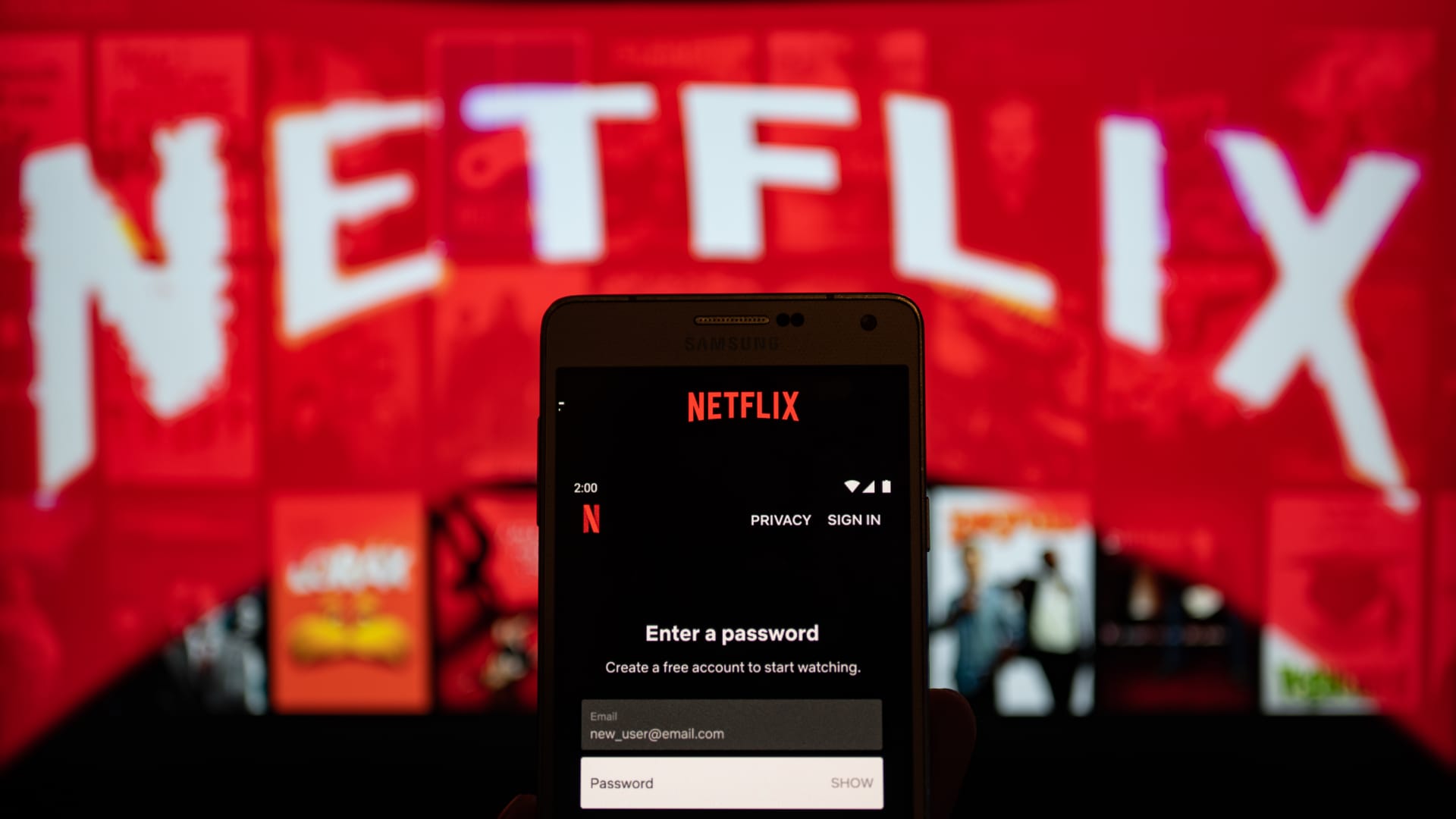Nurphoto | Nurphoto | Getty Images
Netflix stock sank more than 9% Thursday after a quarterly earnings report that was largely positive but left Wall Street underwhelmed and uncertain about key revenue drivers.
The sell-off in Netflix shares follows a 60% year-to-date rally, spurred by the rollout its cheaper, ad-supported plan and a crackdown on password sharing, both of which were supposed to drive growth for the streaming giant.
Netflix offered few details on those initiatives Wednesday in its quarterly report, and its second-quarter revenue fell short of expectations.
“I think people expected a lot more revenue growth in the third quarter, plus there was the weakness in [average revenue per membership],” said analyst Michael Nathanson of MoffettNathanson.
Netflix’s stock has risen on the rollout of ad-supported streaming and a new password sharing policy, which are both meant to boost revenue.
Netflix’s average revenue per membership showed weakness in the most recent quarter as the streamer focused on its stated revenue drivers rather than increasing prices. The company this week removed its least expensive, no-ads plan in a push for customers to opt for the cheaper ad plan instead.
Chief Financial Officer Spencer Neumann said on Wednesday’s earnings call that price increases were put on the back burner as the new sharing policy rolled out. For advertising, he said, the company expects a “gradual revenue build,” adding “that’s not expected to be a big contributor this year.”
The ad-supported plan, which launched late last year, has so far signed up about 1.5 million subscribers, a small piece of overall subscribers, according to a report from The Information on Wednesday.
Netflix executives declined to provide specifics on the ad-supported tier on the company’s pre-taped earnings call.
“Most of our revenue growth this year is from growth in volume through new paid memberships, and that’s largely driven by our paid sharing rollout,” Neumann said. “It is our primary revenue acceleration in the year, and we expect that impact … to build over several quarters.”
But with uncertainty around how long it will take revenue-driving initiatives to take hold, it’s difficult to project Netflix’s revenue in the next two years, making the future murky, according to Wall Street analysts.
“Buyside expectations are high,” Wells Fargo analyst Steven Cahall said in a note before Netflix reported earnings Wednesday.
In a note following the earnings report, however, Cahall said, “patience is a virtue,” and called out investors that were “over-exuberant on paid sharing,” noting revenue growth will take longer.
“It’s not an overnight kind of thing,” Netflix co-CEO Greg Peters said during Wednesday’s investor call.
Netflix forecasts third-quarter revenue of $8.5 billion, up 7% year over year.
The streaming giant has fared better than its legacy media competitors, and its boost in subscriber growth showed its strength as others struggle and prepare for a tumultuous rest of the year as they look for streaming profits and face the Hollywood actors and writers strikes.
Netflix said Wednesday it added 5.9 million customers, but following last year’s first subscriber loss in a decade that sent its stock on a downward spiral, the company said it would shift focus to revenue growth and forecasts.
Image and article originally from www.cnbc.com. Read the original article here.

